
by Tessa Van Rensberg | Nov 12, 2025 | Campaign, Featured
Photo credits: Gift of the Givers
Building Sustainable Support for Those Who Need It Most
[Cape Town, 11 November 2025] — Gift of the Givers has announced the launch of Team Gift, a new monthly giving programme powered by BackaBuddy, designed to generate steady and sustainable support for their life-saving humanitarian work both locally and across the globe.
In a world where crises strike more often and with growing intensity, from conflict and hunger to drought and disaster, Team Gift gives ordinary South Africans a way to stand together consistently, ensuring no one is left behind when hardship hits.
Hope That Never Fades
Disasters, poverty, and limited access to healthcare continue to affect millions each year. Team Gift was created to provide consistent, reliable support, ensuring that when emergencies arise, help can arrive without delay.
The programme’s sustainable funding model allows Gift of the Givers to respond faster, plan further ahead, and maintain essential care long after initial relief efforts have ended.
From a Riverbed in Mozambique to a Movement of Hope
The inspiration behind Team Gift reaches back to 1990, when a young Dr Imtiaz Sooliman travelled with the Islamic Medical Association to Mozambique during a time of war and drought.
While visiting Nacala Hospital, he noticed two frail children digging into a dry riverbed and drinking the muddy water that seeped through the soil. The image stayed with him, a painful reminder of how easily we take clean water and safety for granted, and how deeply ordinary people can suffer in times of crisis.
Determined to act, Dr Sooliman wrote about what he had witnessed and shared it through phone calls and fax machines, his version of crowdfunding at the time. Within just five days, friends and colleagues helped him raise $100 000 (USD), enough to provide 30 boreholes and vital malaria medication.
That first humanitarian mission became the foundation for Gift of the Givers, proving that when people unite around compassion, extraordinary things happen.
Today, more than three decades later, that same spirit of unity and collective giving lives on through Team Gift, a call for South Africans to join a community of monthly donors ensuring the organisation remains ready to respond whenever and wherever help is needed.
How Team Gift Works
From as little as R50 per month, donors can pledge recurring contributions via BackaBuddy, joining a growing global movement of consistent givers. All donations are pooled and distributed across Gift of the Givers’ key humanitarian projects, supporting food security, sanitation, healthcare, education, disaster response, and more.
Because the funding is stable and recurring, Gift of the Givers can plan ahead, reach further into crisis zones, and sustain life-saving support long after the headlines fade.
To celebrate the spirit of collective compassion, the organisation is calling on supporters around the world to be among the first 1 000 members of Team Gift — a founding community of monthly donors recognised for their commitment to ongoing, measurable impact.
Founding Member Benefits
When individuals join Team Gift as Founding Members, they will gain access to a range of exclusive benefits designed to bring them closer to the organisation’s life-saving work.
Founding Members will receive live, real-time updates through the Team Gift WhatsApp Community, including direct messages, photos, and videos from Gift of the Givers’ relief teams on the ground, offering a rare, behind-the-scenes view of humanitarian action in progress.

Photo credits: Gift of the Givers
Why Now
Unpredictable crises demand reliable compassion. Too often, projects fade once immediate relief ends, leaving communities vulnerable. Team Gift closes that gap, turning one-time generosity into continuous care.
Ronelle Mungaroo, Communications Manager at Gift of the Givers, explains:
“Team Gift represents the heart of our mission — a community of consistent givers who ensure that when the next crisis arrives, we are already prepared. Every monthly donation, no matter the size, helps sustain the lifeline that keeps hope alive.”
Catherine Swanepoel, Chief Growth Officer at BackaBuddy, adds:
“Recurring giving is one of the most powerful ways South Africans can make an impact. Through Team Gift, BackaBuddy is proud to support Gift of the Givers in building a community of everyday heroes who make long-term humanitarian work possible.”
Join Team Gift, Become a Founding Member
Gift of the Givers and BackaBuddy invite South Africans to transform compassion into action by joining Team Gift today.
About Gift of the Givers
Founded in 1992, Gift of the Givers is Africa’s largest disaster response NGO. The organisation has delivered more than R6 billion in humanitarian aid across 47 countries. Its wide-ranging projects include food security, water provision, healthcare, education, and disaster relief, as well as infrastructure improvements in disadvantaged South African schools and rapid local disaster response efforts that strengthen resilience at home and abroad.
The Gift of the Givers Foundation is the largest disaster-response non-governmental organisation of African origin on the African continent. The essence of its presence is to bring hope and restore dignity to the most vulnerable.
About BackaBuddy
BackaBuddy is South Africa’s leading crowdfunding platform, enabling individuals and organisations to raise funds securely for causes they care about.
Since its inception, BackaBuddy has helped raise over R610 million for thousands of campaigns across South Africa — supporting individuals, families, and charities in times of need.
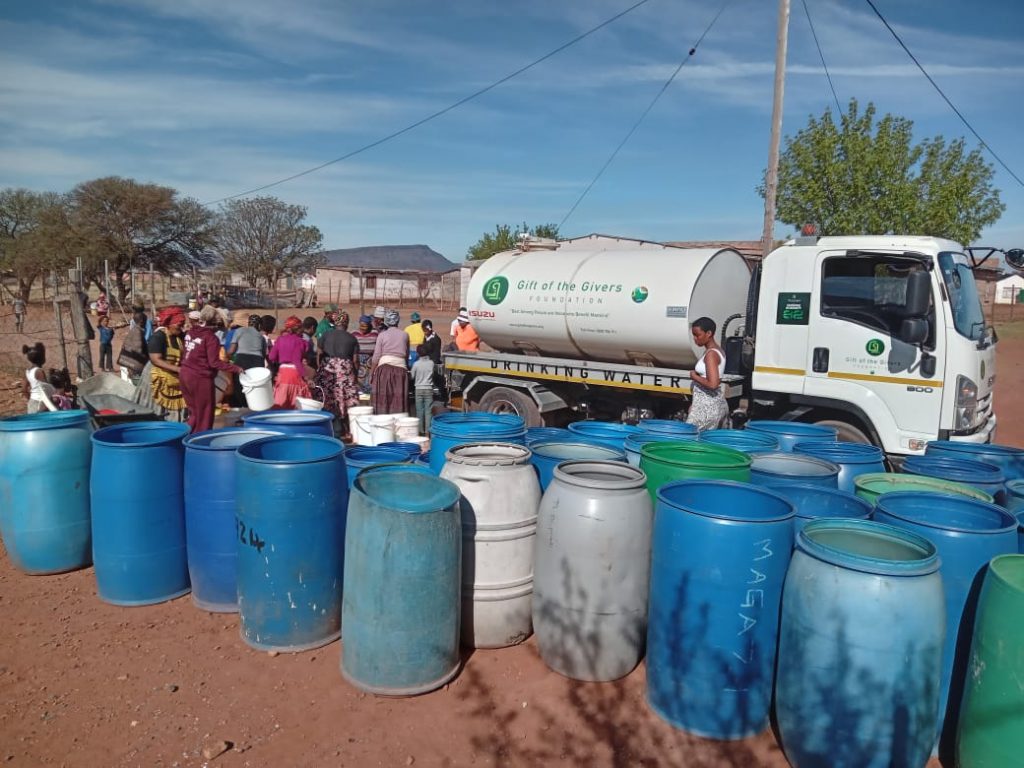
Photo credits: Gift of the Givers
By powering recurring donations, BackaBuddy helps South Africans sustain meaningful change and provide steady support for critical initiatives like Team Gift.
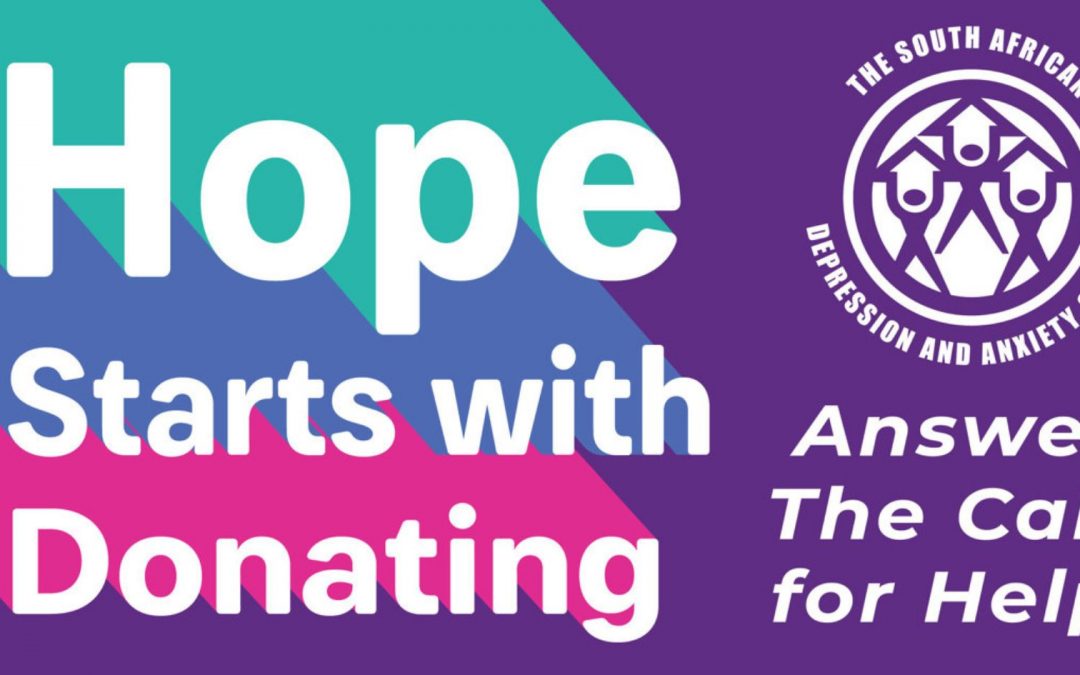
by Tessa Van Rensberg | Nov 12, 2025 | Campaign, Featured
The South African Depression and Anxiety Group (SADAG),
A beacon of hope for countless individuals, is based in South Africa – its impact reaches across every province, home, and heart that has ever faced the darkness of mental illness. For over 31 years, SADAG has been the country’s leading mental health NGO, answering calls for help every day and night of the year. Through donations, and crowdfunding, BackaBuddy has partnered with SADAG , in an effort to help raise awareness around mental health and the amazing work the organisation does.
Answering the Call for Help
For SADAG, every ring of the phone represents a life – someone in crisis, reaching out as a attempt to be seen, to be heard, to be saved. Their
24-hour Suicide Crisis Helplines are often the only lifeline for thousands of South Africans who find themselves in moments of despair
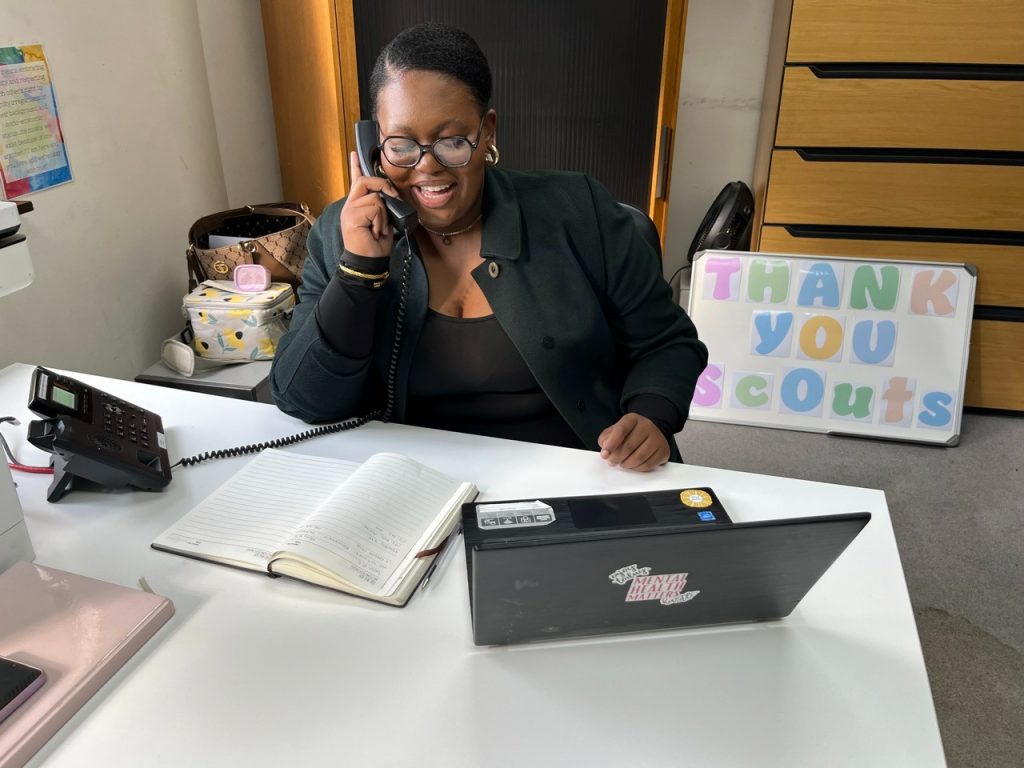
As SADAG’s Development Manager, Fatima Seedat, explains, “‘Answer The Call for Help’ means more than picking up a phone – it’s about showing up for someone at the exact moment they feel invisible, hopeless, or alone.”
Every month, SADAG faces the monumental task of keeping their helplines open. Their operating costs reach R180,000, ensuring that trained counsellors can continue to provide free, compassionate support to every caller. To sustain this service, they’ve launched a crowdfunding campaign on BackaBuddy, aptly titled “Answer The Call for Help”, which has already raised over R12,610 from 24 generous donors.
Each contribution, no matter how small, keeps hope alive.
As Fatima shared, “When a caller is ready to end their life, that one answered call can change everything.”
She recounts the story of a young man who phoned them one night, moments away from taking his own life. The counsellor’s gentle patience and empathy turned that moment of despair into survival – saving his life through connection, compassion, and care.
A Partnership for Hope
For BackaBuddy, partnering with SADAG is not just a collaboration – it’s a commitment to compassion. The platform, known for connecting everyday heroes with causes that matter, has joined forces with SADAG to help raise both funds and awareness for mental health.
This partnership underscores a shared mission: ensuring that no person’s cry for help goes unanswered. Together, they aim to break the silence surrounding mental health and inspire South Africans to take part in the movement – by donating, crowdfunding, or simply showing kindness.
As SADAG puts it, “Through this collaboration, every donation becomes part of something bigger: a shared effort to ensure that no cry for help goes unanswered. But it’s not only the callers who benefit — giving and extending kindness also nurtures the giver’s own mental wellbeing.”
The Healing Power of Giving
Science agrees: giving is good for your mental health. Acts of generosity – from volunteering to donating – trigger the release of endorphins, dopamine, and oxytocin, often called the “happiness hormones.” These natural chemicals help reduce stress, combat anxiety, and foster a deeper sense of connection.
It’s what BackaBuddy calls “Growing Givers” – the idea that when you give, you grow. Giving to SADAG isn’t just about keeping the phone lines open; it’s also about creating ripples of kindness that heal both the receiver and the giver. As SADAG notes,
“When you help someone, you also help yourself.”
Becoming a Champion for Mental Health
Anyone, anywhere in South Africa, can become a champion for SADAG on BackaBuddy. You don’t have to be a counsellor to save lives – you can host a charity run, arrange an awareness day, and then back your efforts with a BackBuddy campaign. Every initiative contributes to a collective promise: that every call for help will be answered.
And for those who are struggling themselves, SADAG offers this reminder:
“Reach out for help if you need it, even if it’s just to say, ‘I’m not okay.’ Answering the call doesn’t always mean being on the helpline – sometimes it’s simply choosing kindness, choosing connection, choosing to care.”
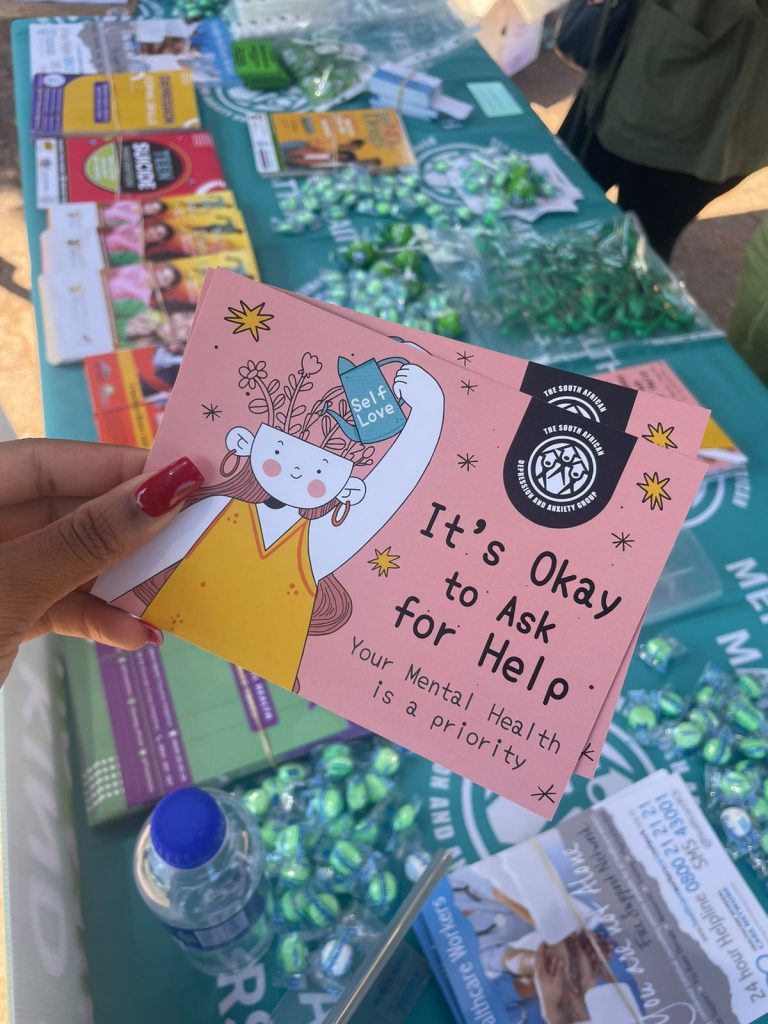
A Shared Mission of Hope
In a world where so many feel unseen, this partnership between SADAG and BackaBuddy represents unity, hope, and humanity at its best, reminding South Africans that compassion is a strength – and that through giving, we not only lift others, but we lift ourselves.
To support SADAG, visit their BackaBuddy campaign link here:
👉 https://www.backabuddy.co.za/campaign/answer-the-call-for-hope
Share the story, donate if you can – even as little as R50 can save a life – and help ensure that no call for help ever goes unanswered.
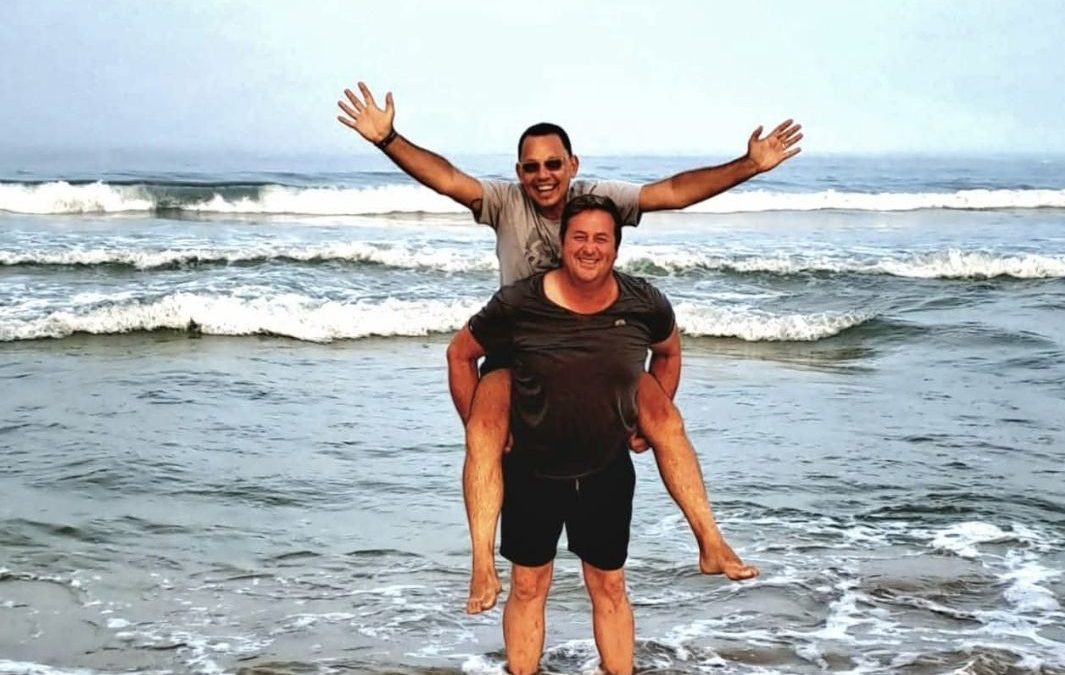
by Tessa Van Rensberg | Nov 7, 2025 | Campaign, Impact
Rian Steyn (58) from Mossel Bay, Western Cape, has always been known for his golden touch — a hairstylist whose artistry could make anyone feel beautiful inside and out. But in 2021, Rian’s life took a devastating turn when he was diagnosed with prostate cancer — a journey that would not only test his health and spirit but also ignite a powerful message of love, resilience, and Prostate Cancer Awareness this Movember.
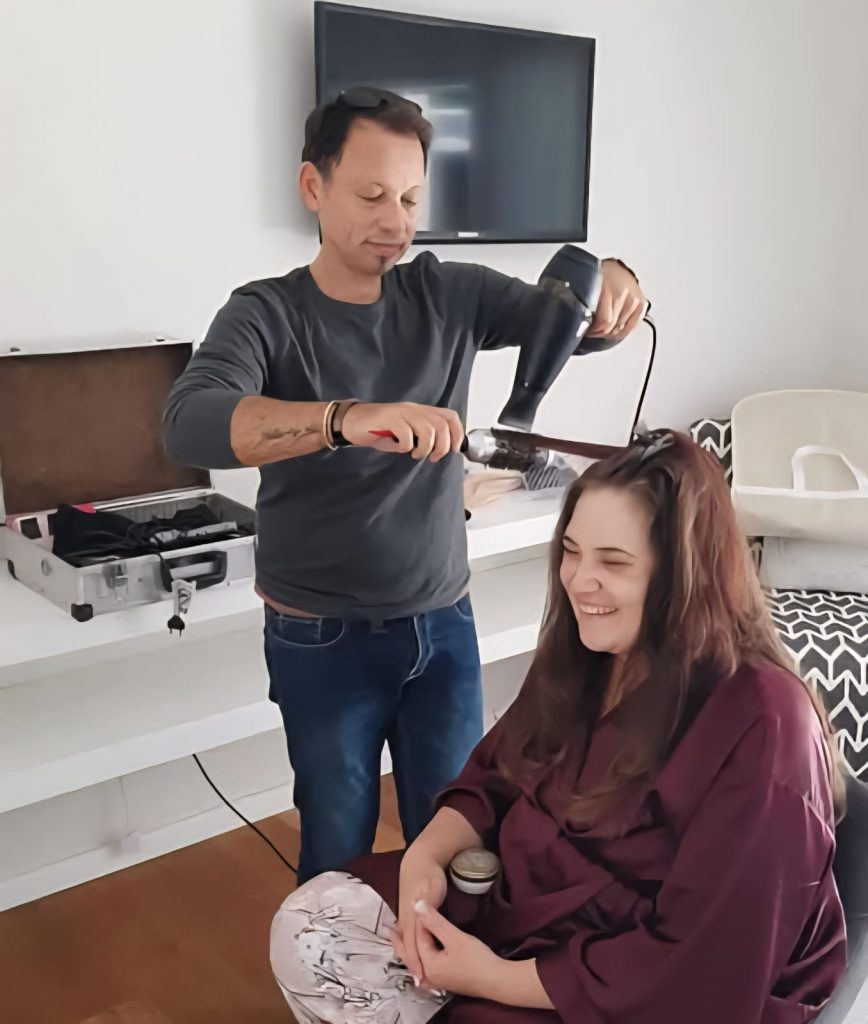
What started as minor discomforts – hip pain and frequent trips to the bathroom – turned out to be symptoms of something far more serious. After receiving initial reassurance from a urologist that the cancer was “under control,” the couple was blindsided just two months later when tests revealed that Rian’s cancer had advanced to stage 4 metastatic prostate cancer, an incurable form of the disease.
“You hear about the five stages of grief,” says Dewald. “But until you live through it, you don’t realize how hard it hits. You grieve the life you had – but then you keep going.”
“It Is What It Is” – A Battle of Body and Spirit
The road since that day has been paved with painful procedures, conflicting medical advice, and endless emotional tolls. A ureteral stent, which doctors later determined was unnecessary, caused Rian unbearable pain for nearly two years. In 2024, he underwent an orchidectomy to help manage his symptoms – a surgery that saved his life but deeply impacted his confidence and sense of self.
“It broke him,” Dewald admits. “Just like a woman feels after a mastectomy, Rian felt less of himself. People even addressed him as ‘Mrs.’ – not realizing the pain behind it.”
Despite these challenges, Rian continues to fight – not just against cancer, but against the stigma that keeps so many men from seeking help. With courage and honesty, he and Dewald have decided to share their journey publicly, to encourage other men to speak up, get checked, and value their health before it’s too late.
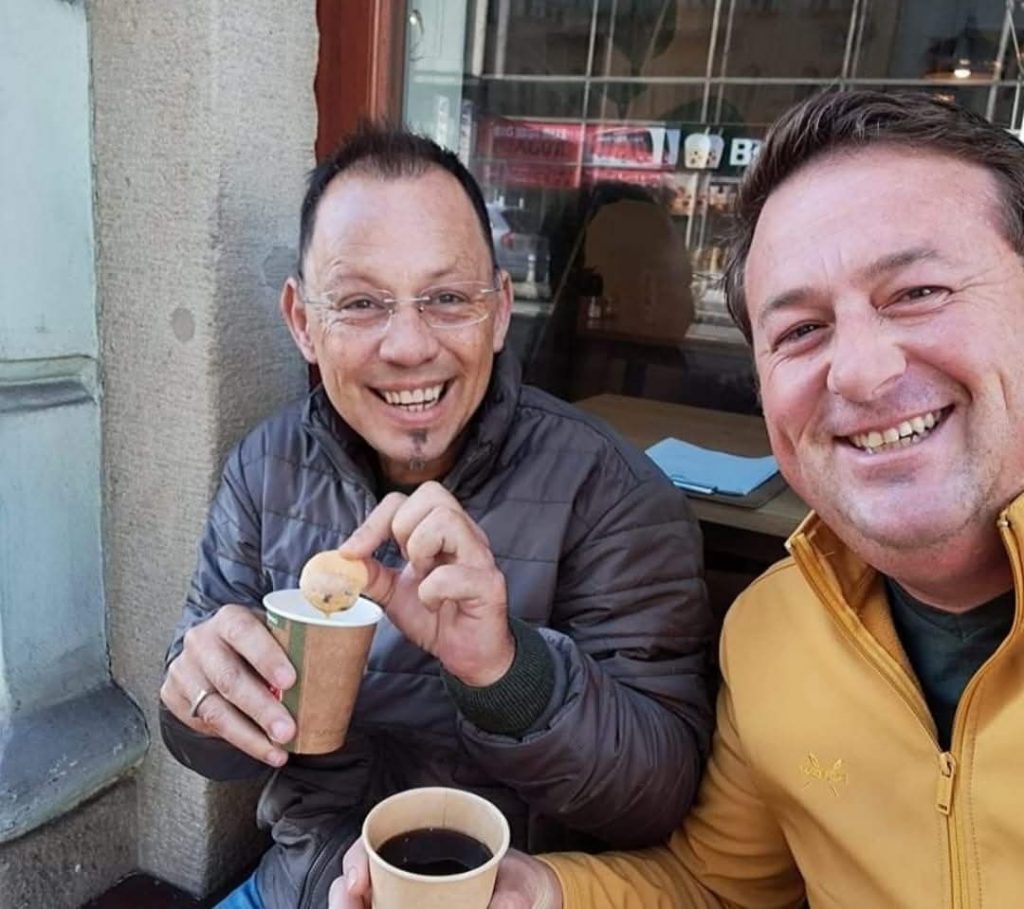
Breaking the Silence Around Men’s Health
Prostate cancer affects 1 in 9 men, yet many avoid getting tested out of fear, pride, or stigma. For Dewald, this silence is deadly.
“Being male comes with pressure – to be strong, to never show weakness,” he explains. “Men need to let go of that ego. The few seconds it takes for a prostate exam can save your life.”
Their story is more than one of illness; it’s one of awareness and advocacy. Through their campaign and courage, Rian and Dewald are helping rewrite the narrative around men’s mental and physical health, one conversation at a time.
This Movember, as moustaches sprout in solidarity around the world, Dewald hopes their message reaches other families: “The struggle of living with prostate cancer is far worse than the short discomfort of getting checked.”
Fighting for Dignity – and Hope
Today, Rian has completed six rounds of chemotherapy, and though the treatment has taken a toll, he continues to wake up each day with quiet courage. His greatest wish? To feel “whole” again. Dewald has launched a BackaBuddy crowdfunding campaign, aptly named “Rian’s Fight Against Prostate Cancer”, to raise R55,000 for reconstructive surgery that would help restore Rian’s confidence and dignity.
So far, the campaign has raised R16,020 from 17 donors, but there’s still a way to go. For Dewald, this isn’t about vanity – it’s about giving his husband the will to live again.
“People tell us to just be grateful he’s alive,” Dewald says. “But quality of life matters too. This surgery would help Rian face the world again – and himself – with pride.”
Despite his own recent health scare – a stroke in September 2025 – Dewald remains Rian’s rock. Together, they choose love, laughter, and acceptance over despair. “It is what it is,” their doctor once told them. But through their resilience, Rian and Dewald are showing the world that “what it is” can still be beautiful, hopeful, and full of purpose.
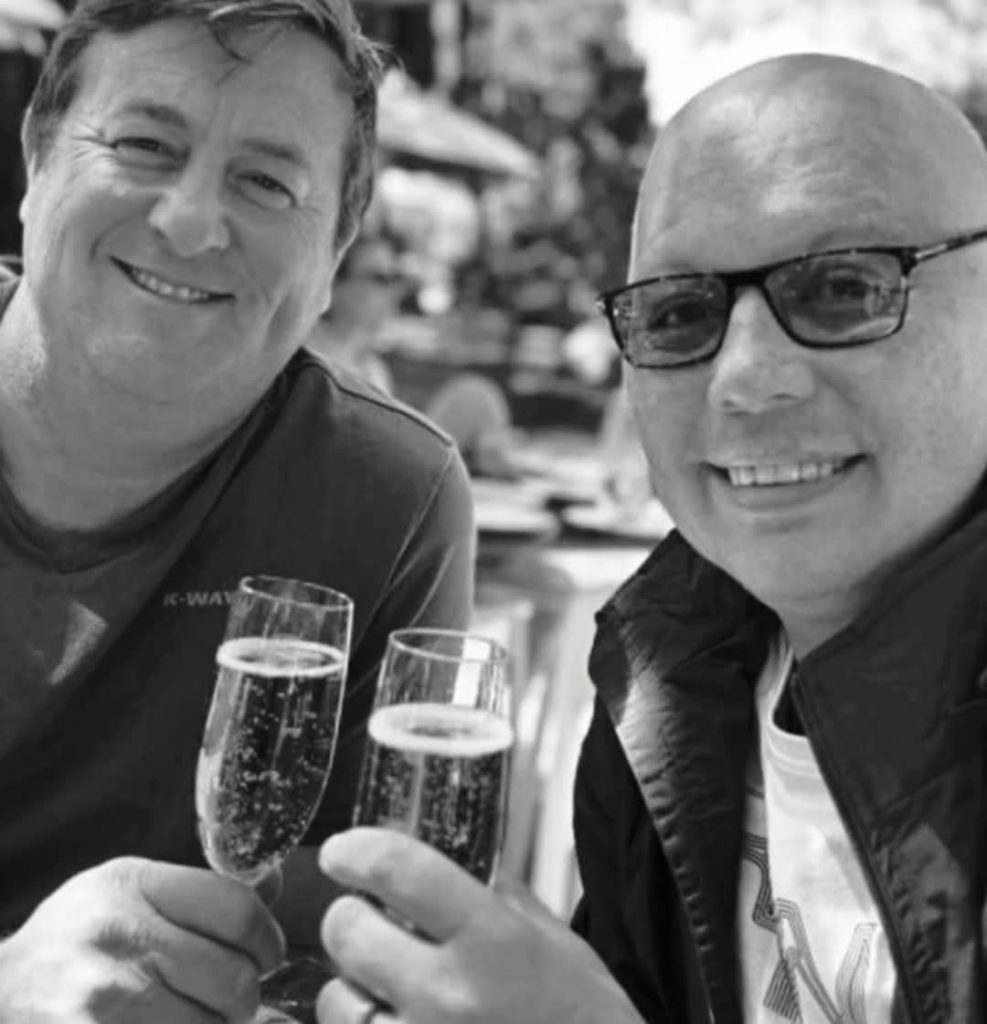
A Message for Movember, #ProstateCancerAwarenessMovember
As Movember encourages men to grow moustaches in solidarity, Rian’s story reminds us that awareness is more than a symbol – it’s a call to action. It’s about the courage to speak, to get tested, to support one another, and to live with gratitude and grace.
“Life is precious,” says Dewald. “Don’t take a single moment for granted. You only have one life – take care of it.”
To support Rian, visit his BackaBuddy campaign link here:
https://www.backabuddy.co.za/campaign/rians-fight-against-prostate-cancer
Your contribution – or even just sharing their story – can help restore dignity, raise awareness, and save lives.
Launch your own crowdfunding campaign on BackaBuddy
Inspired by Rian’s story this Prostate Cancer Awareness Movember? You too can create a life-changing impact for yourself or someone you love. Whether it’s for medical care, education, community upliftment, or a dream worth fighting for, BackaBuddy helps South Africans unite for good causes.
Join thousands who’ve raised over R630 million for needs that matter most.
👉 Launch your campaign today
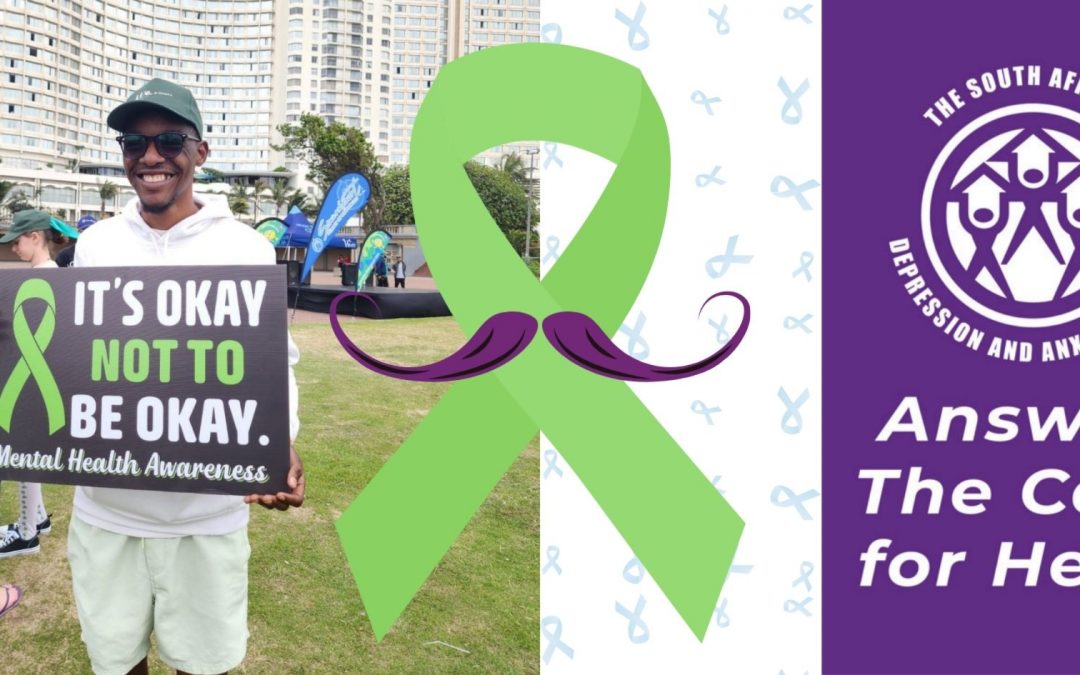
by Simbulele Jezile | Nov 4, 2025 | Campaign
When the phone rings at SADAG’s Crisis Helpline, counsellors never know who’s on the other end, only that it might be someone’s last attempt to hold on.
Sometimes there’s a voice. Sometimes there’s just silence, a pause, a shaky breath, a quiet cry.
And then, softly:
“I don’t know who else to talk to.”
For 31 years, the South African Depression and Anxiety Group (SADAG) has been answering that silence. It’s South Africa’s leading mental health organisation, and the only one running 24-hour suicide helplines, every single day of the year.
Now, during Men’s Mental Health Awareness Month, SADAG is asking South Africans to help them keep those lines open with their campaign, “Answer The Call for Help.”
Every Call Is a Story
Each day, SADAG counsellors answer over 2,500 calls, and one in four is suicide-related. Behind every number is a person in pain, searching for a reason to stay.
“When someone finally speaks, you can feel the weight in their voice,” says a SADAG Call Centre Manager, Tracy Feinstein. “There’s fear, shame, exhaustion… but also a flicker of relief. That’s when we tell them, ‘You’ve done the right thing by calling. You’re not alone.’”
Those words, simple, human, steady, can be the difference between despair and hope. Sometimes, they are the first words a caller has heard all week that sound like care.

“A Missed Call Can Mean a Missed Life”
What happens if no one answers?
“For many, that call is the moment they finally reach out. If no one picks up, that courage can turn into hopelessness. A missed call can mean a missed life.”
That’s why SADAG is urgently raising R180,000 to cover its helpline operating costs for November — the month the world pauses to talk about suicide in men, but the calls never stop coming in.
“On average, it costs R50 to answer one call,” SADAG Development Manager, Fatima Seedat explains. “But that one call might save a father, a sister, a friend. Behind every answered call is training, empathy, and hours of emotional care.”
Why Men Stay Quiet
About half the calls SADAG receives are from men, and many of them say the same thing: “I don’t want my family to think I’m weak.”
Fatima shares that, “Men in South Africa are raised to fix everything but themselves. They’re told not to cry, not to talk, not to break. So when they do finally reach out, they’re terrified.”
That’s why SADAG focuses on making that first call safe. “We remind them that reaching out isn’t weakness, it’s courage,” she says. “The moment they speak, the silence breaks, and healing begins.”

“You Just Saved My Life”
For SADAG’s counsellors, there are moments that never leave them. “After an hour of listening, someone will sometimes whisper, ‘You just saved my life.’”
“It’s the most humbling thing. Because that’s what this work is, listening. Not fixing, not preaching. Just being there when it matters most.”, says Fatima.
A Country Finding Its Voice
In the early 2000s, mental health was barely discussed in South Africa. Now, thanks to decades of advocacy, the conversation is growing louder.
“Before COVID, we received around 800 calls a day,” Fatima says. “Now it’s more than 2,500. People are talking, which means the stigma is breaking.”
But access to care is still scarce. “We’ve made progress, but we need more hands, more hearts, more funding. That’s why this campaign matters so much.”
“If Every South African Gave R50…”
Every call costs roughly R50 to answer — the price of a cup of coffee. “If every South African gave just R50, we could answer thousands more calls,” Fatima says. “Imagine that — thousands of people finding someone who says, ‘How can I support you?.’”
To make that vision a reality, SADAG has launched a BackaBuddy crowdfunding campaign to raise R180,000, the amount needed to keep its Suicide Crisis Helplines open throughout the month.
So far, 23 compassionate supporters have already contributed over R12 000, helping SADAG get closer to its goal. Each donation — no matter the size — keeps a counsellor on the line and ensures that when a call for help comes in, it never goes unanswered.
Because that’s what SADAG has been doing for 31 years: reminding South Africans that no one should ever face silence alone.
Join the movement by donating to SADAG on BackaBuddy:
https://www.backabuddy.co.za/campaign/answer-the-call-for-hope
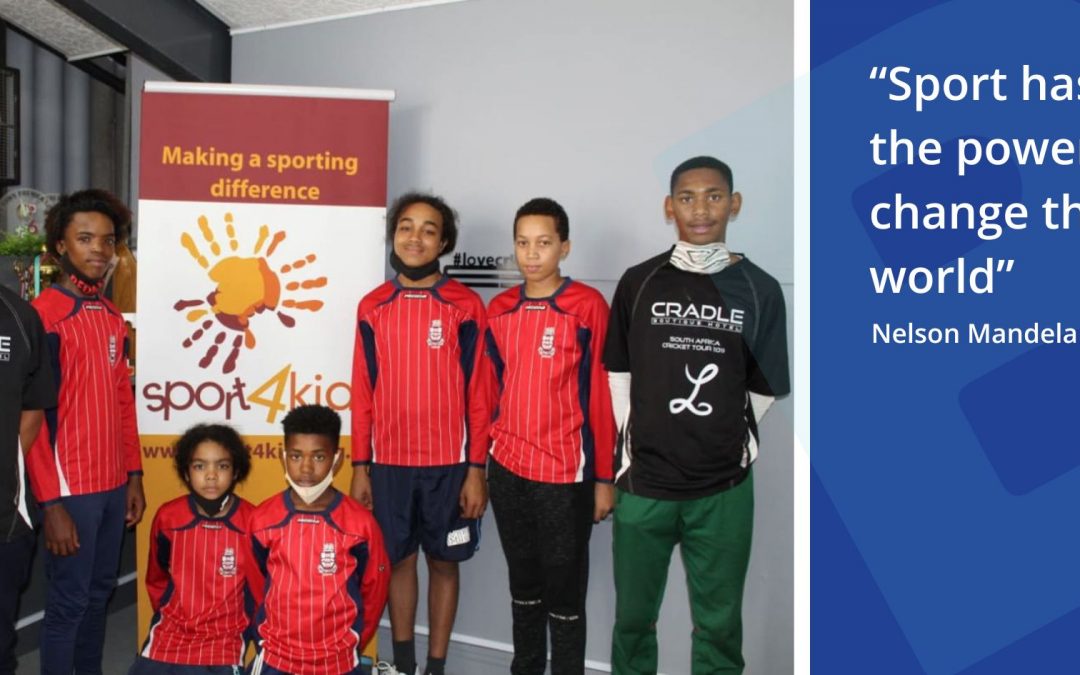
by Tessa Van Rensberg | Oct 28, 2025 | Campaign
Andrew Russell (61) from Cape Town, Western Cape
For as long as he can remember, sport has been more than just a game for Andrew Russell – it’s been a language of hope, connection, and opportunity. Today, as the director and co-founder of sport4kids, Andrew has dedicated nearly two decades to ensuring that children from underserved communities can experience that same joy and belonging that the power of sport brought into his own life.
Through sport4kids, a non-profit organisation he started in 2006 with David and Jenny MacGregor, Andrew is helping rewrite the stories of children who might otherwise have been left on the sidelines. Their mission is simple yet profound: to give every child a chance to play – regardless of their financial background.
From the Field to the Heart
Andrew’s love for sport began in his early school days.
“I played everything I could – cricket, rugby, you name it,” he recalls fondly.
After studying, he spent eight years teaching and coaching at a high school before venturing into sports tourism. In 2000, he founded Cape Africa Tours, bringing sports teams from around the world to South Africa.
It was during these tours that Andrew began noticing a heartbreaking reality.
“Many of the local kids had incredible talent but no access – no kit, no coaching, and often, no transport,” he says.
Visiting teams would sometimes leave behind their equipment, and Andrew would distribute it to local schools. But the need was far greater than a few extra cricket bats or soccer balls. That realisation sparked the birth of sport4kids.
Since its founding, the organisation has helped hundreds of children participate in sports by providing them with equipment, uniforms, and access to coaching.
“We’ve seen shy, uncertain kids transform into confident young athletes,” Andrew explains. “Sport teaches teamwork, resilience, and belief – lessons that last long after the final whistle.”
A Vehicle of Hope
One of the organisation’s proudest moments came in 2016 when Westminster Under School in London raised funds for a 14-seater Toyota Quantum – a vehicle that became the beating heart of the programme.
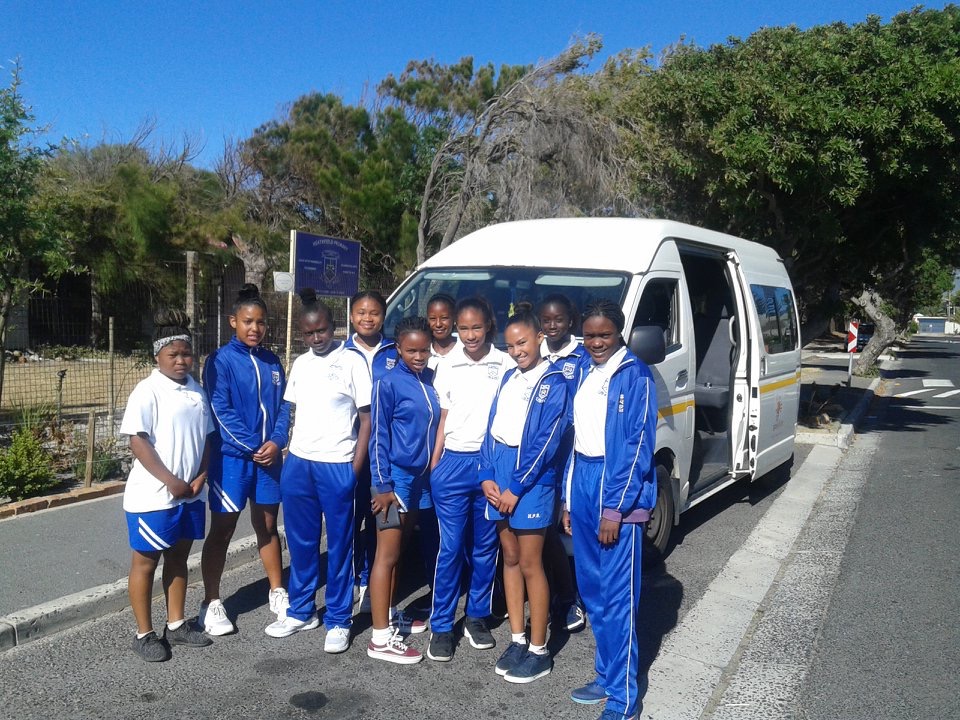
“That van has transported countless children to practices, matches, and tournaments they otherwise would have missed,” says Andrew. “Without it, hundreds of fixtures would simply not have happened.”
But sustaining this vital service has become increasingly difficult. Rising fuel costs, maintenance fees, and the need for more sports gear have stretched their resources thin.
“Right now, we’re in urgent need of support to keep the vehicle running and ensure no child misses their shot at playing,” he adds.
In June 2025, Andrew launched a crowdfunding campaign on BackaBuddy, aptly titled ‘The Power of Sport’, to raise R250,000 for kits, equipment, and vehicle maintenance. So far, 10 donors have contributed R5,783.50, but the journey ahead remains long.
Yet Andrew remains hopeful.
“Every small donation truly helps,” he says. “A cricket bat or soccer ball might seem small, but for a child who’s never owned one, it means the world.”
Sport as a Lifeline for Mental Health
Beyond the physical benefits, Andrew believes sport has the power to nurture mental well-being and community belonging – something especially vital for South African youth.
“Sport gives kids a purpose, a sense of identity,” he explains. “It keeps them off the streets, away from dangerous paths, and helps them believe they belong to something bigger than themselves.”
He recalls one story that has stayed with him over the years: a young boy named Nathan, who received a scholarship to attend Plumstead High School through sport4kids.
“Nathan was sport-crazy and full of potential,” says Andrew proudly. “Today, he’s involved in coaching and giving back to other young athletes – proof of how the ripple effect of opportunity can change lives.”
For Andrew, these moments make every challenge worth it. “When a parent comes up to you after a match, with tears in their eyes, thanking you for believing in their child – that’s when you realise this work matters,” he says.
The Future: Building Champions On and Off the Field
Looking ahead, Andrew envisions a thriving network of empowered children and communities who see sport not as a luxury, but as a right.
“In ten years, I hope sport4kids will be bigger, stronger, and reaching even more schools across South Africa,” he says. “I don’t ever want to see another talented child sit out simply because they couldn’t afford to play.”
He also expresses deep gratitude to those who have already supported the cause.
“We’re incredibly thankful to everyone who’s donated and cheered us on thus far,” he says. “You’re not just funding sport – you’re giving kids hope, structure, and a reason to dream.”
As Nelson Mandela once said, “Sport has the power to change the world.” For Andrew Russell and his team, those words aren’t just a quote – they’re a calling.
Keeping the Power of Sport Alive
For many children in Cape Town, sport4kids isn’t just about games – it’s about belonging, confidence, and healing. The organisation’s impact extends far beyond the playing field, fostering community, inclusion, and positive mental health.
Through his BackaBuddy campaign, Andrew hopes that more South Africans will recognise how even the smallest act of generosity can spark enormous change. “It doesn’t take a lot to make a difference,” he says. “Every bit counts – and together, we can keep the power of sport alive.”
To support Andrew and sport4kids, visit their BackaBuddy campaign link here:
👉 https://www.backabuddy.co.za/campaign/the-power-of-sport
Share their story and help bring the joy of sport – and hope – to more children across South Africa.












